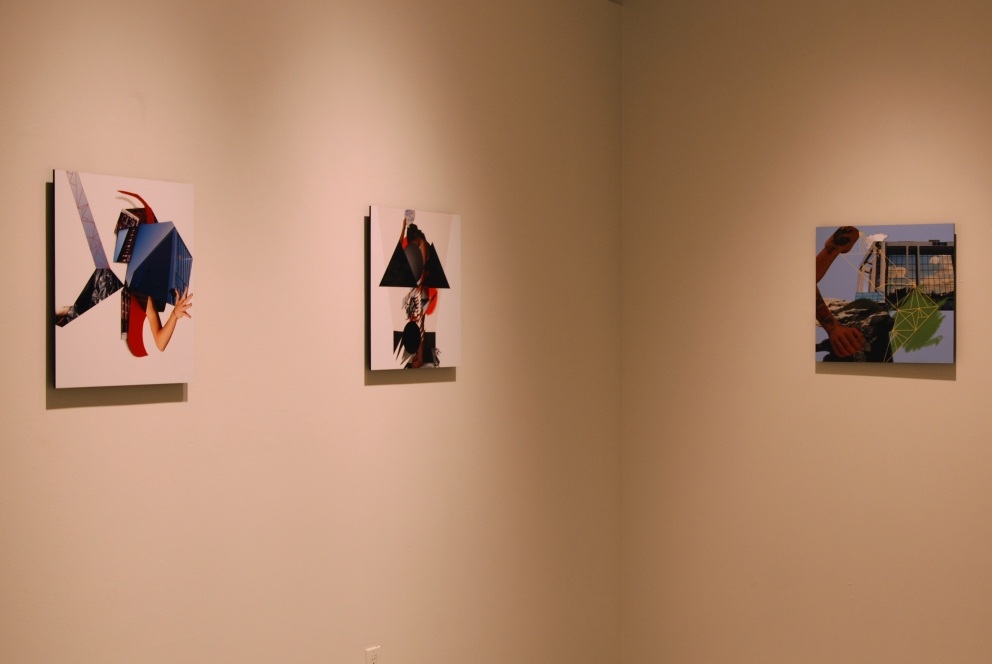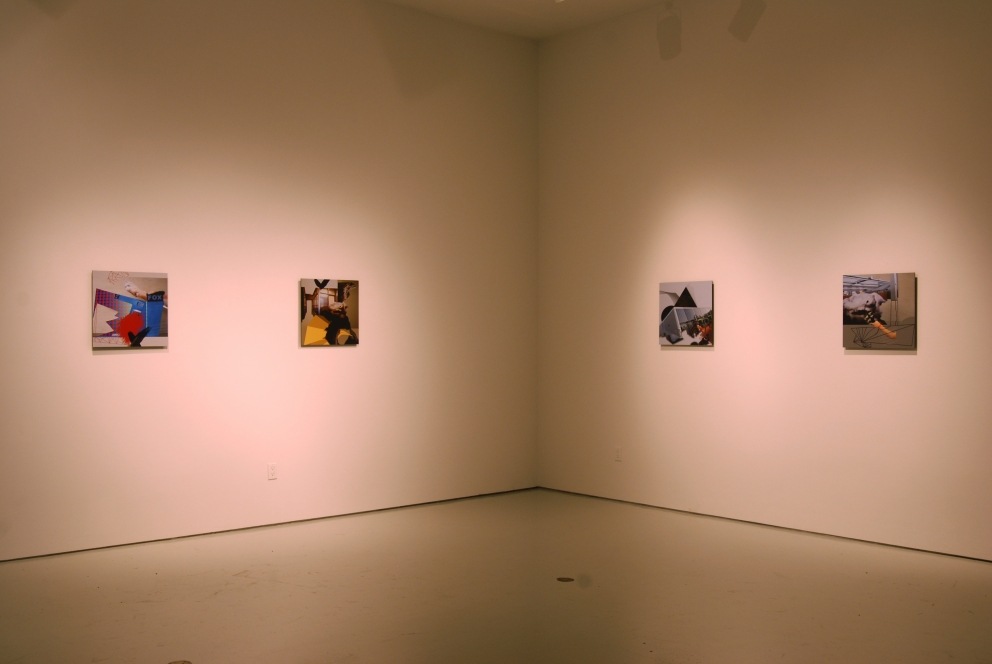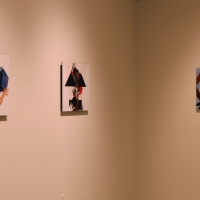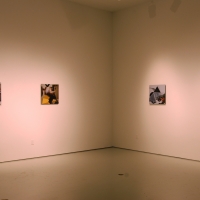When considering the latest body of work by Curtis Stage the Pop Art collage work of Peter Blake came to mind. Intuitively I drew connections between Stage’s and Blake’s use of sampled imagery, a process where seemingly unrelated subjects are combined to create a context where new fragmented narratives emerge.
To test out my notion visually I visited the Tate online to view a jpg of Peter Blake’s “On the Balcony” 1955-7. Accompanying the Blake painting is a flow chart menu of subject matter with categories and subcategories classifying the composite of imagery in the piece. One of five categories is ‘objects,’ which has subcategories of clothing & personal effects, fine arts & music, fine arts, named works, food & drink, furnishings, miscellaneous, reading, writing, printed matter, and vessels & containers; the category of ‘clothing and personal effects’ is further broken down into badge, cigarette packet, spectacles, and tie, all of which are hyperlinks to be clicked upon for further information and cross-referencing. This thorough method of navigating and classifying imagery closely resembles a process of mental mapping Stage uses as a strategy to develop manipulated photographs. By plotting events, images, people, and timelines, Stage juxtaposes and assembles compositional elements; partial grids, interior spaces, artificial colors, and landscapes are spliced together with Photoshop layering. These manipulated photographs playfully present simultaneity while achieving a formal abstraction. In comparing the experience of tracing the flowchart of Blake’s work with the strategies of Stage’s studio practice, ways of looking at art and ways of creating art overlap and merge.
Pulling apart and reassembling information is both the conceptual challenge and visual pleasure inherent to Stage’s work. The energy of his collaged images seems to emanate from the force binding disparate elements together. In one manipulated photograph, a sailing ship is carefully cropped out of its original context and set into a shape of sharp overlapping triangles. The new contour distorts the image while exaggerating the spreading of sails. The compositional device generously presents the viewer with a playful tension; the swift sea vessel’s plotted course is contradicted by the dramatic angles pointing out like arrows showing an alternate sense of direction. In another image a pair of superimposed hands gesture from the top edge of the picture, pulling the viewer into an interior space. The hands, one of which is blurred implying motion, are dramatically larger in scale than the interior. By composing unrelated images along a common vanishing point, Stage has produced a convincing one-point perspective picture. Accepting a grand invitation, the viewer navigates through a curious interior space that is stylishly enhanced with blocks of color and Photoshop drawing.
Using technology Stage creates spatial shifts where ordinary places, shapes and objects are suspended in a state of constant mix and remix. The quirkiness and lighthearted humor of his work are balanced by a masterful warping of scale and space.







